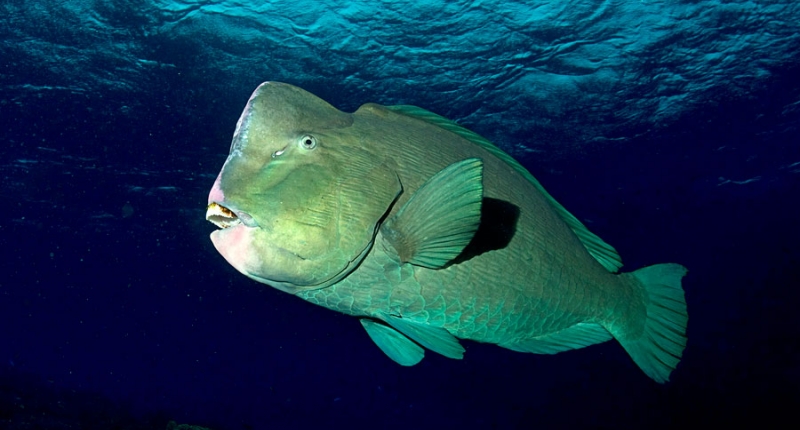Beyond the Forest: The Impact of Logging on an Iconic Coral Reef Fish

One of the most substantial hurdles to developing a comprehensive conservation framework is ensuring that all direct and indirect variables with the potential to affect conservation targets are accounted for.
The latest study released by the SNAPP Ridges to Reef Fisheries working group reinforces the significance of incorporating these factors into management plans by identifying the link between a land-based human activity and marine conservation efforts. Their publication in Biological Conservation addresses how logging activities in the forests of the Solomon Islands pose a threat to near-shore coral reef habitat.
The researchers studied the life history of the bumphead parrotfish, an iconic coral reef species that is listed as vulnerable on the IUCN Red List. While the fish is known to be threatened by overfishing in its adult stage, the Ridges to Reef team identified logging as another threat to species livelihood.
Juvenile bumphead parrotfish are dependent on nursery habitat provided by near-shore coral reefs until they reach maturity. Logging loosens sediment on land, allowing it to be transported downstream and deposited over critical nursery habitat where it severely decreases habitat suitability.
Researchers found that juvenile bumphead populations that were adjacent to logging activities experienced a decline twenty-four times that of their brethren in nursery habitat that was unaffected by sedimentation. Incorporating this double jeopardy of human impacts at both the adult and juvenile stage is critical to the development of a conservation framework for the bumphead, and serves as an example for similar conservation endeavors.
---
Logging degrades nursery habitat for an iconic coral reef fish
Hamilton, R.J., Almany, G.R., Brown, C.J., Pita, J., Peterson, N.A., Choat, J.H.
Biological Conservation, May 2017, doi: 10.1016/j.biocon.2017.04.024
